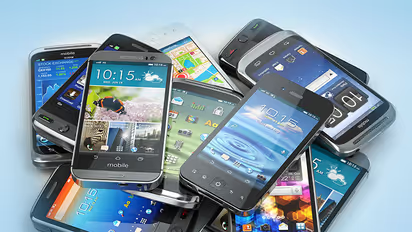Smartphones and the curious tale of drastic price cuts

Synopsis
Companies launch their top-end phones at a high flying price and then discount it within a month of the announcement. Is it the lack of initial traction that forces companies to cut down prices, or is it a part of their strategy to get more sales at a later date? Unless smartphones are something truly high-end in comparison, their prices shouldn’t be.
LG and HTC have joined the league of companies like Sony who have a knack for crashing their smartphone prices within a very short period of launch. The LG G6 was listed on Amazon at Rs 51,000 at the launch day of April 24, after a handsome price cut on 20 May, it is now available at around Rs 44,000. That is straight Rs 7,000 off within a month of announcement.
HTC U Ultra and U Play, HTC’s drastically overpriced smartphones got a price cut of Rs 7,000 and Rs 2,500 each. The smartphones are now available at Rs 52,990 and Rs 23,990 respectively.
Its latest phone, the Xperia XZs that packs a novel 960fps camera has already got a price cut for the unlocked version in US and it’s only a matter of (short) period of time before you see that happening in India.
Now there are phones that haven’t got a price cut at all since a year or more of their launch. Apple’s flagship iPhones are a big example. Then there is the Galaxy S7, the price drop of which you must have been eagerly waiting for.
Companies launching their top-end phones at a high flying price and then discounting it within a month of their announcement brings for a valid argument – is it the lack of initial traction that forces companies to cut down prices, or is it a part of their strategy to get more sales at a later date with the lure of price drop.
It shouldn’t be the former. A wrong price tag to a gadget totally kills it and a company must not be making that blunder. But then is it the latter?
Whatever it is, you shouldn’t buy a smartphone the very next day, or for that matter, just because it had a price cut. Off course it makes sense sometimes to buy particular model at a particular price when compared with current offerings, simply because the discount is huge. And that is probably what the company wants you to do.
It is sensible to wait till the reviews are out to have a right judgement of phone’s value for money. Sometimes, a phone is expensive just because it has some new tech on board. But it may not appeal to the masses or have anything valuable to add to the overall experience of the phone.
The Xperia X, for example has a Full HD display with X-Reality video engine for mobile and an amazing 23MP camera. But not only does the chipset (Snapdragon 650) has heating problems, it was not competitive at all at its launch price of Rs 48,000. iPhone 6S or Galaxy S7 pack a much better hardware at the same price. And then there are phones like the OnePlus 3T that offer an insane value for money with no compromise in experience what so ever.
The LG G6 is a nice smartphone too. But for one, it has an older generation chipset that the likes of Google Pixel already offer in the sub Rs 45,000 price bracket. Then, its interface is not as clean and fast as the Pixel’s stock Android. In fact it isn’t much different than the last year’s V20, which now, by the way, is now selling at Rs 34,000 after a price cut of a (meagre?) Rs 20,000.
The thing with phone companies in question is that though they make fantastic devices (V20 is a superb smartphone with serious protection to drops from shoulder height and one of the best dual cameras), they don’t price them right. Software, swiftness and hardware innovations play a big role on a successor flagship, and unless they are something truly high end in comparison, their prices shouldn’t be.
Find the latest Technology News covering Smartphone Updates, AI (Artificial Intelligence) breakthroughs, and innovations in space exploration. Stay updated on gadgets, apps, and digital trends with expert reviews, product comparisons, and tech insights. Download the Asianet News Official App from the Android Play Store and iPhone App Store for everything shaping the future of technology.